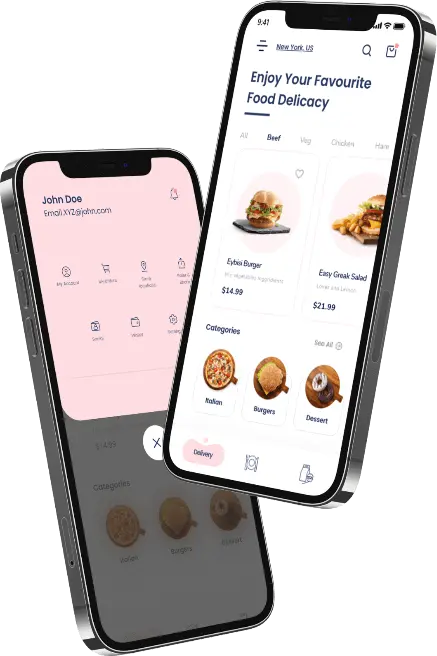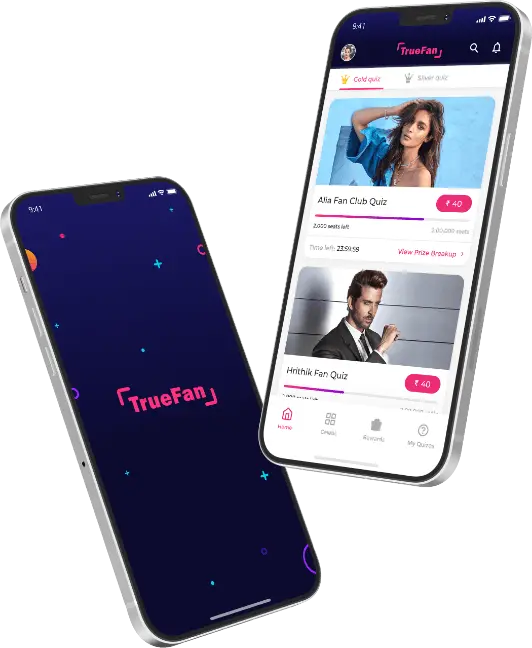29 Dec 2022
Introduction to Super Apps in Banking: A Massive Revolution!
Surbhi Bhatia

According to American Express, 30% of SMEs had changed their financial service provider by 2021, according to a survey. So what’s the most important reason? The new financial institution provided several options ‘under one roof.
The number of single-use mobile banking apps has been increasing exponentially over the past few years. However, a new type of app is now available in the West from Southeast Asia. This will allow the Western world to gain momentum and increase its market share. On the other hand, the digital financial services sector may be disrupted by super apps in finance. Are lenders to be concerned? Are super apps dangerous, or can they be a huge opportunity for digital lending companies and the entire banking industry?
Super app is a term that dates back to 2010 when it was first used. Super app, a platform that hosts a variety of solutions to combine financial and non-financial or different types of financial services into a single digital product, is today a strong platform.
Also Read – Why should businesses invest in Fintech Apps?
What is a financial super-app, you ask?
A financial super mobile applications, in simple terms, is a collection of services and features tailored to each user’s needs. User experience and interconnectedness are the key pieces to this puzzle. Facilitating the user’s access to all features efficiently and easily. Here is a list:
- Shared wallet
- Reminders for Bills
- Auto bill payments
- Manage subscriptions
- Options for investment
- Savings accounts
- Budgeting tools
What Super Apps Have an Impact on Banks
To enhance the customer experience and increase monetization, most super apps integrate financial services into their digital platforms. Banks might feel a threat due to the increased use of super apps. This is because more people may abandon their single-bank apps and begin using super-apps. This threat could also be a chance: super apps can create new financial products that banks can use on an unbranded or branded basis. The ‘banking-as-a-service’ concept introduced within super apps is highly potent: usually, the regulatory framework in financial services is tangled and difficult to deal with. This is where banks can form strategic partnerships with financial super apps and get their share of the cake.
How to Take:
1. To remain competitive and look promising as a strategic partner, banks must accept and improve their digital infrastructure. While well-established banks can maintain their market share, they might see customers looking for quick and easy financial solutions. Banks can be ready for any market change by adopting open data and updating their core banking system architecture.
2. The banks might consider what embedded services they could offer in super apps. Banks can make great revenue streams with white-label services. In some cases, however, co-branded products can be more lucrative.
Consumers get Super app benefits
Super apps have brought great value to people’s lives. Now, the end-user enjoys luxury that was unimaginable just a few decades back. Then, the banking system was rigid and outdated. The consumer was on the receiving end, while the bank controlled the action.
The super app has changed the balance of power, giving consumers control over their finances. Let’s look at some of the key benefits the consumer will enjoy.
1. Convenience
Convenience is the most important thing. It’s head and shoulders above all else. This super app was created to provide a single-stop shop for consumers’ finances. To check account balances, transfer funds, pay bills, and so on, consumers used to hop from one platform to the next.
They can now save time and money by logging in to a mobile app and have complete control over their finances.
2. Make smarter decisions
Do you remember when people called their banker, broker, or accountant to find out how their money was affected by taxes, investments, and other factors? A consumer’s financial knowledge was limited, and any financial decision required the assistance of an expert. Was the expert always in your best interests? How personal and close was your relationship with these experts in order to trust their recommendations?
This app provided a clear, objective, transparent, and precise approach to financial decision-making. It simplified the process and presented people with the best possible option. Are you in search of an insurance package? Are you thinking of investing in stocks? Put down the calculator, pen, and paper, and let your financial super-app take control.
Benefits for banks and businesses
It is common to believe that open banking is opposed to traditional banking. But, on the contrary, open banking is an ally to traditional banking, and both banks, as well as businesses, can benefit greatly from it.
1. Banks should be able to focus on relationships
Apps that are super can take over the boring and bureaucratic parts of traditional bank roles and let banks focus on building relationships with customers. The stigma associated with financial institutions is that they are insensitive and faceless. Bankers were too busy with their jobs to have the energy and time to get to know their customers better.
Get the super financial app.
Financial institutions can now eliminate transaction processing, data compilation, risk profiling, and other banking functions by using the app. These tasks are automated, which allows banks to concentrate on customer loyalty and retention.
2. Businesses have greater opportunities to market products and services
Companies are fighting for a fraction of our shrinking attention span. Our ability to focus on one thing is nearly impossible when we are constantly bombarded daily with information and content.
Businesses have spent thousands of dollars on marketing to find the solution. Finally, the super app was the answer. The app is a great way to help people manage their time and focus on one app instead of dozens. This super app centralizes people’s attention and allows them to target new products and services with their marketing campaigns. The company now knows where its audience is and can direct them to the right product or service.
6 Steps to Create a Super App
Before starting the app development process, companies should conduct market research. This will help them identify their target customers and their expectations and needs. Your buyer persona can be used to build amazing apps.
Step 1: Select a suitable platform
Your target audience will determine which platform you choose to operate on. A single platform may be better if your focus is on a particular set of people. If your audience is large, however, you may need to develop separate apps. The super – app can be developed in three ways:
- Native apps: Native Apps are optimized for one platform, such as Android, iOS, or Windows. Each one has its own programming language and development tool.
- Cross-Platform App (or Hybrid App), In this solution, one codebase can be used to develop multiple platform platforms. These hybrid apps can be published in app stores in a similar way to native apps.
- Web Application: This is a mobile-optimized website. These apps look similar to native/hybrid app interfaces, but they work in browsers just like any other website. Their UI/UX is inferior to those of native/cross-platform apps.
You may also decide to choose one of these options based on your available resources and budget.
Step 2: Create a Feature list
The feature-set integration is a key component of super app development. These features should be designed around major customer needs, user-friendly, and unique enough to make the app stand out. These are just a few of the features you might consider adding to your super app for a seamless experience:
- Google / Integration with social media: customers can log in to their Google or Social Media accounts (Facebook or Linkedin) and make signups.
- Multilingual support: If you plan to expand your super-app to multiple regions and reach a wider audience, it is worth considering allowing users to choose their preferred language.
- Payments system: including cashless payments, mobile payments, investment, QR code payments, etc. WeChat, one of the most popular apps, also collaborated with banks to offer basic banking and savings services to its users.
- Schedule Booking: This feature lets users book services directly from one app without having to log in on other sites.
Super apps that have different core products can offer separate services, despite having the same features. It is important to break down the use cases to scale beyond core functionality. You can increase the effectiveness of your current offerings by partnering with or linking services to third parties. Momo’s original concept was the digital wallet. However, Momo has partnered with service providers like 7-eleven and Ahamove. To expand its ecosystem.
Step 3: Choose a digital business model
The Super App combines multiple functionalities, each with a unique business model and aim. You should consider monetization strategies to generate revenue and maintain the app’s system.
- Free:by providing products or services for a fee, it is possible to monetize more easily once customers are familiar with the offerings. Many free services include messaging, money transfers, invoice payments, and online booking.
- Freemium – Businesses might offer limited functionality for free in the hope that customers will upgrade to the premium version. Line, a Japanese messaging app, offers freemium stickers packages and in-app gaming.
- Subscription- Instead of buying a product or service one time, users can subscribe to a monthly or an annual plan. Zalo has recently introduced subscription fees for its messaging features with many benefits, including extended contact lists, more searches, and more.
- Advertising- You have the option to place ads in-app and make money from people who click on them. Ads are often used in news, food delivery, and e-commerce.
- Two-side marketplace (peer-to-peer)- This decentralized platform allows two parties to participate in a transaction. The super app can be used to sell or buy goods. They will need to pay delivery, commission, platform, and platform service fees. This model of digital business is ideal for services such as courier services, food delivery, ride-sharing, and other similar services.
Step 4: Take a look at the Tech Stacks as well as the Development Team
Multiple functionalities in a single app require top-notch technology and a skilled development team to ensure the platform runs smoothly.
- The technology suite contains HTML5, CSS, and React Native, Flutter and Bootstrap, as well as Fabric, HTML5, CSS, and React Native. Also, Google (Cloud Messaging. Maps. Compute Engine) and many other services.
- Programming and testing languages: JavaScript, C# Python, Ruby, PHP.
- Frameworks/ Tools to develop Redux. SASS. Ruby on Rails.
- Frameworks/ Tools to Test: Katalon Selenium, Appium.
- Other Tools: Email Marketing, Management Tools, Analytics, Finance, and More.
Step 5: Design and Develop, Test
After you have established your app’s goals, target audience, business model, and features, the next step in planning your app’s information architecture is to plan it. Once you have settled on the app functionality, the next step is to plan the information architecture. This will include how users will interact with your app and how it will navigate. Finally, you can collect customer feedback and incorporate it into future versions by creating a Minimum Viable Product (MVP).
The design phase involves considering user flow, drawing wireframes for the app, creating prototypes, and building an interface. Wireframes are essentially the skeleton of a mobile app and allow you to visualize it. Once the wireframes have been completed, it’s up to the front-end and back-end developers to code the app and build it. They will organize the technical aspect of the problem, such as how third-party programmers will provide services within the super app in order to maximize its efficiency and minimize disruptions.
QA specialists manage the testing of functionality, interoperability, and system integration during the staging phase. Depending on your project’s requirements, you can choose between automated and manual testing. You can also test the app with real users by using a beta version to improve it.
Step 6: Ensure security and keep yourself updated
It is crucial to provide a safe and secure app for users as they are becoming more concerned about privacy. Gojek is not only able to add new features and products at an incredible pace, but also focuses on creating a world-class security program that its users can rely upon. The app’s Security Pipeline can resolve digital problems such as Vulnerable Code dependency and Hardcoded credentials in codes.
You must continue to update the app after you have deployed it. This will keep up with changing trends and satisfy customers’ needs.
What is the future of financial super apps?
Although the super app is designed for glory and success, there are some things that developers, businesses, and users need to be aware of. Let’s look at some factors that will determine the success of the super app in the future.
1. Data Management
Open banking and the genesis for the super app opened the floodgates to data. Those who have it must treat it with care.
These apps are built by third parties, fintech companies, and organizations. So they need to know where the data comes from, how it is stored, and how they create bulletproof information flows.
Building trust takes time, and it takes only a few seconds to lose it.
Also Read – Fintech Special: How to Get Your Investor’s Attention?
2. Servicing niche markets
Super apps are supposed to be universally accessible. Although this is true, we believe that the evolution of these apps will be influenced by specialization. Revolut and other giants have shown the way to what super apps can do. However, as we get more familiar with OB, more market segments will be drawn for specialized apps.
Segments like portfolio investing and insurance have particular details that an app for financial management might not be able to cover. End users can gain immense value from an app that focuses on a specific sector.
Tips for Building a Super App
It is difficult to create an innovative mobile app. It must contain all the essential services and have a robust technology platform that supports them. The following tips will help you create or transform an existing super app.
- Personalization: If users are unable to access the services they want with one touch, they may abandon your app. To attract users, you might consider sending personalized push notifications to them or offering them special offers.
- Information security: The app should be transparent about what information it collects from users. The data must only be used to enable the app’s functions and should not be shared with anyone else.
- Customer service dedicated: No matter how great the app is, good customer service will not make it a success. Super apps should pay more attention and be responsive to customers, especially if they use a P2P model.
- Minimalism: Do not overload your super app with too many services. You should instead only display the most popular and recommended services on your homepage. The rest of the pages should be hidden.
To Sum Up!
Super apps are easier to use than multiple apps and offer more user engagement and acquisition. Don’t complicate your app by adding unnecessary features. Instead, focus on the most important features that users use.
Techugo has helped many companies achieve their visions and create high-quality apps that meet the market standard.
What are you waiting for?
Contact us today for efficient mobile banking app development, and achieve your dream project.
Get in touch.
Write Us
sales@techugo.comOr fill this form















